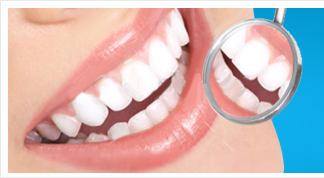Fillings are divided into various types. These are Direct Restoration and Indirect Restorations.
DIRECT RESTORATIONS- They include the type of filling materials that are placed in the prepared cavity in a single visit. The materials included in this are resin composites, silver amalgam, glass ionomer cements, temporary filling materials etc.
INDIRECT RESTORATIONS- They include the filling materials that require more than 1 visit to be placed in the cavity. On the first day of appointment, the dentist prepares the tooth and makes an impression to record the details of the tooth to be restored. It is then sent to the dental lab. In the next visit, the material is placed in the prepared tooth. These include veneers, inlays, onlays, crowns and bridges fabricated with gold, base metal alloys, composites.
DIRECT RESTORATION
SILVER AMALGAM
Silver amalgam is undoubtedly the most commonly and widely used filling material. A properly handled silver amalgam produces a restoration that lasts for many years. It is used mostly in posterior teeth.
ADVANTAGES
Material is easily handled and manipulated
Widely used in many different types or sizes of cavities
Used as retrograde fillings
Least technique sensitive
Minimal expansion or contraction at the time of setting
Optimal compressive strength
Economical
Hardness is comparable to that of dentin and enamel
Biologically stable
Durable
Single appointment placement
Easily repaired
DISADVANTAGES
Poor aesthetics, so is not recommended for anterior teeth
Extensive cavity cutting is required
Mercury toxicity
Low tensile strength
Base is required under the filling as silver is a good thermal conductor
Poor edge strength
Qalvanic current can be produced if any other metallic filling is done in the teeth that come in contact
Amalgam blue, blackish appearance of few restored teeth
Some patients complain of hot and cold sensitivity after the filling
Shows marginal breakdown
CAN BE USED IN
In patients of all ages
Stress bearing areas
In small to moderate size cavities
In patients with poor oral hygiene
When moisture control is a problem
In low economic status patients
As a foundation to metal ceramic, cast metal restorations
CONTRAINDICATIONS
Anterior teeth
Patients who have history of allergy to mercury or any other component
Silver amalgam contains silver alloy powder and liquid mercury. The silver alloy powder has constituents like silver, tin, copper and zinc. Amalgam is of 2 types Admixed alloy and Single composition alloy. It has also been divide into High copper alloy and Low copper alloy, depending upon the amount of copper present in it.
RESIN COMPOSITES Composite resin is presently the most popular tooth colored filling material. Composite material is a compound of two or more different materials with properties superior or intermediate to those of the individual component. The various components of a composite resin are resin matrix, fillers, coupling agents, coloring agents.
The resin matrix initially used was Bis GMA(Bisphenol Glycidyl methacrylate). Now, UDMA(Urethane dimethacrylate) and TEGDMA(Triethylene glycol dimethacrylate) are also being used.
Fillers used are quartz, silica, tricalcium phosphate, zirconium dioxide. They provide strength, hardness, rigidity to the material.
Coupling agent binds the resin matrix to the filler particles. Organic silanes are commonly used coupling agents.
Coloring agents used are aluminum oxide, titanium dioxide.
Composites are divided into 3 types depending upon the size, amount and composition of the inorganic filler. These types are Conventional, Microfilled and Hybrid. Placement of a composite filling requires an etchent (like phosphoric acid) and a bonding agent.
Various advances have been made in composites, these are Flowable composites, Packable composites, Antibacterial composites, Laser curing composites.
FAILURES OF COMPOSITE RESINS
discoloration of the fillings, specially around the margins
recurrent caries
marginal fractures
gross fracture of the restoration
failure in maintaining proximal contact
post operative senstivity
HOW TO AVOID THESE FAILURES
complete removal of dental caries
complete etching
proper isolation while placement of the restoration
uniform and single coat of bonding agent
avoid bulk placement of composite material
avoid contact with fingers or gloved hands
proper curing of composite
keep cavity as small as possible
avoid sharp internal line angles
use small increments
composite at bevelled areas should be polished properly
GLASS IONOMER CEMENT (GIC)
The glass ionomer cements have evolved as a hybrid of Silicate cements and Polycarboxylate cement. It is available in powder and liquid form. The powder contains silica, alumina, aluminium fluoride, calcium fluoride, sodium fluoride, Aluminium phosphate. The liquid contains polacrylic acid, itaconic acid, maleic acid, tricarballylic acid, tartaric acid, water. The powder and liquid are mixed on a paper pad in the ratio 3:1 and then placed in the cavity formed.
Types of GIC
There are 4 types of GIC- Conventional, Hybrid, Tri-cure and Metal reinforced.
ADVANTAGES:
Aesthetic
Good adhesion to the tooth
Releases fluoride, so anti carcinogenic
High retention
Biocompatible
Good marginal seal
Requires minimal cavity preparation
DISADVANAGES:
Soluble
Water affects the setting reaction
Abrasive
Not as aesthetic as composite resins
USES OF GIC:
Used both in deciduous and permanent teeth
Class V and class III cavities
Abraded or eroded areas
Root caries
Rampant caries, nursing bottle caries
Luting or cementing in veneers, metallic and nonmetallic inlays and onlays
Protective liner under amalgam, composite
Core build up
Retrograde fillings
Splinting of periodontically weak teeth
A traumatic restorative treatment
Repair of perforations in tooth.
Various modified forms of GIC are available now like Metal modified GIC( miracle mix, glass cermets), Resin modified GIC, Compomer(polyacid modified composite resins).
INDIRECT RESTORATIONS
INLAYS AND ONLAYSAn Inlay is an intracoronal cast restoration designed mainly to restore occlusal and proximal surfaces of the posterior teeth without involving the cusps of the teeth. They are custom made to fit the prepared cavity and then are cemented in that place. Its placement usually takes two appointments. During the first visit, an impression is made of the tooth and a temporary inlay is placed. The impression is then sent to a dental lab, which will make the inlay according to a particular tooth. On the second appointment, the temporary inlay is removed and permanent placed on the tooth.
An Onlay is a combination of intracoronal and extracoronal cast restorations when one or more cusps are covered. It is a more extensive reconstruction and indicated in areas where lots of tooth structure needs to be restored. It is made in the same way as an inlay and then the permanent onlay is securely bonded using high strength dental resin.
INDICATIONS
Extensive tooth loss
Teeth having periodontal problems also
Endodontically treated teeth
For correction of occlusion
Retainers for fixed prosthesis
Teeth having fracture lines in enamel
Patients with good oral hygiene
CONTRAINDICATIONS
Developing or deciduous teeth
High caries index
Dissimilar metals
High plaque index
Porcelain inlays and onlays are highly recommended for anterior teeth since they are aesthetic and natural looking as compared to metal fillings. They are long lasting once bonded to the tooth surface and cover large decayed areas.
Gold inlays and onlays are used in posterior teeth.
DIRECT FILLING GOLD
GGold foil is one of the earliest available dental filling materials.
GIts available in various forms like gold foil sheets, pellets, ropes, laminated foil, platinized foil, mat gold, mat foil, powdered gold.
INDICATIONS
Incipient carious lesions
Eroded areas
Vent holes in crowns
Cavities on cusp tips
CONTRAINDICATIONS
Teeth with large pulp chambers
Periodontically weak teeth
Large carious lesions
Aesthetic areas
Low economic status patient
Not possible to maintain complete isolation



